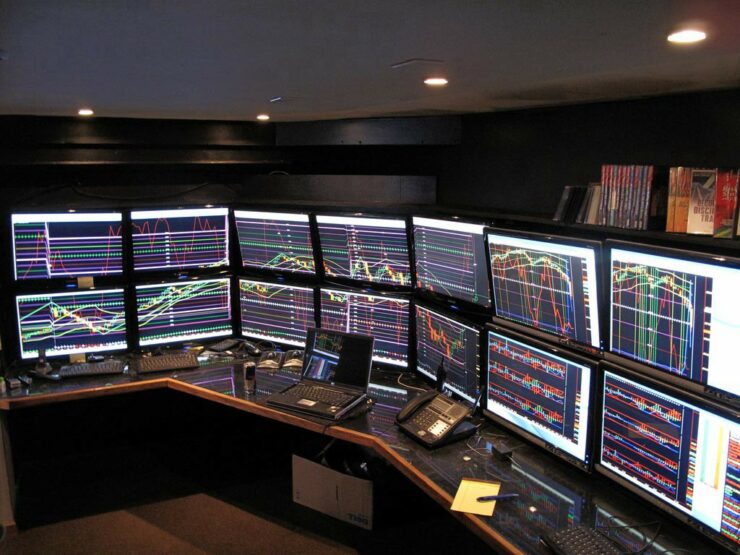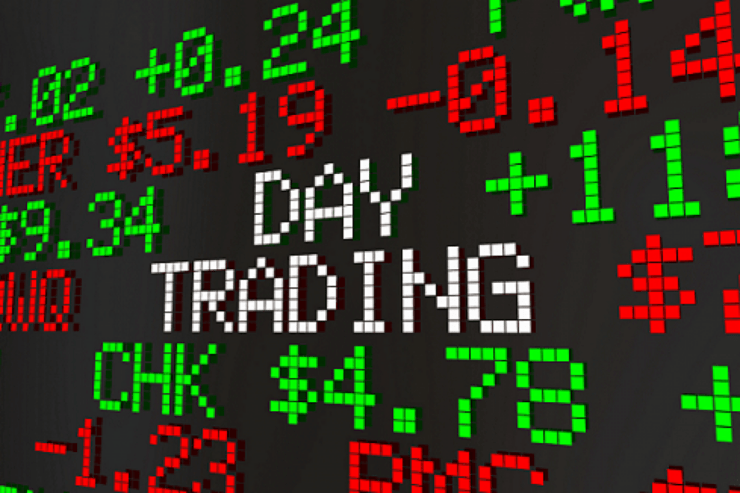Day trading is the process of buying and selling assets – such as currencies, stocks, or commodities – with the view of making a profit from ever-changing market prices. In other words, you hope to sell the asset for more than you originally paid.
Our Forex Signals
1 - month
Subscription
 Up to 15 signals daily
Up to 15 signals daily 76% success rate
76% success rate Entry, take profit & stop loss
Entry, take profit & stop loss Amount to risk per trade
Amount to risk per trade Risk reward ratio
Risk reward ratiomonth
3 - month
Subscription
 Up to 15 signals daily
Up to 15 signals daily 76% success rate
76% success rate Entry, take profit & stop loss
Entry, take profit & stop loss Amount to risk per trade
Amount to risk per trade Risk reward ratio
Risk reward ratiomonth
 Most popular
Most popular
6 - month
Subscription
 Up to 15 signals daily
Up to 15 signals daily 76% success rate
76% success rate Entry, take profit & stop loss
Entry, take profit & stop loss Amount to risk per trade
Amount to risk per trade Risk reward ratio
Risk reward ratiomonth
Lifetime
Subscription
 Up to 15 signals daily
Up to 15 signals daily 76% success rate
76% success rate Entry, take profit & stop loss
Entry, take profit & stop loss Amount to risk per trade
Amount to risk per trade Risk reward ratio
Risk reward ratioSeparate Swing Trading Group
 Up to 3 signals weekly
Up to 3 signals weekly 76% success rate
76% success rate Entry, take profit & stop loss
Entry, take profit & stop loss Amount to risk per trade
Amount to risk per trade Risk reward ratio
Risk reward ratiomonth
1 - month
Subscription
 Up to 15 signals daily
Up to 15 signals daily 76% success rate
76% success rate Entry, take profit & stop loss
Entry, take profit & stop loss Amount to risk per trade
Amount to risk per trade Risk reward ratio
Risk reward ratiotime
With that being said, the overarching concept of day trading is that you never hold on to an asset for more than a day. On the contrary, traders might keep a position open for a number of hours, or even minutes. As such, profits are based on super-small price increases/decreases – often with the aid of leverage.
Confused? Don’t be – as in our Learn 2 Trade 2023 Guide On Day Trading, we show you everything you need to know. By reading it in full, you’ll stand the best chance possible of getting your day trading career off on the right foot!
Note: Most newbie day traders lose money. This is because they don’t have a firm understanding of how the day trading space works – especially when it comes to installing sensible risk management strategies.
Eightcap - Regulated Platform With Tight Spreads

- Minimum deposit of just 250 USD to get lifetime access to all the VIP channels
- Use our Secure and Encrypted Infrastructure
- Spreads from 0.0 pips on Raw Accounts
- Trade on the Award-Winning MT4 & MT5 Platforms
- Multi-jurisdictional Regulation
- No Commission Trading on Standard Accounts

What is Day Trading?
In its most basic form, day trading is a form of online trading that rarely sees an investor keep a position open overnight. Instead, trades are often active for a number of minutes or hours – but never days. This is in stark contrast to traditional investment streams like stocks and bonds – which see investors hold onto the asset for several years.
As a result, the short-term nature of day trading means that investors will target extremely small gains. With that said, day traders typically place dozens, if not hundreds of traders each and every day – so these small gains can quickly add up for the skilled investor. Crucially, all day traders – irrespective of skill-set or experience, will encounter losing trades. This is just the nature of the game.

Once you’ve targeted an asset, you then need to speculate whether you think it will go up or down in value – in relation to its current market price. If you speculate correctly, then you will make money. If you don’t, you lose money. Due to the sheer number of trades that investors make in the day trading space, you must have a firm understanding of how to read charts, as well as interpret fundamental news.
Pros and Cons of Day Trading
- Trade thousands of markets
- Successful traders make a generous full-time living
- Ability to long or short an asset
- Apply leverage to boost your trade sizes
- Hundreds of regulated day trading brokers to choose from
- Get started with a debit/credit card or e-wallet
- Trade on the move via a broker app
- Most day traders lose money
- You need to be able to handle the emotional side effects of losing trades
Understanding Day Trading – The Basics
The process of day trading is relatively simple once you get your head around things. To help clear the mist, we’ve listed some of the many factors that you need to understand before parting with your money.
✔️ Buy (Long) vs Sell (Short)
If you’ve previously used a traditional stockbroker, you’ll know first-hand that you get one option, and one option only when buying shares. That is to say, you can only speculate on the price of the underlying company going up. In other words, you wouldn’t buy shares in IBM, Ford Motors, or Microsoft if you think the company will go down in value!
However, this is where day trading is unique, as you have the option of going ‘short’. This means that you are speculating on the asset, or group of assets, decreasing in price. For example, let’s say that you think the value of oil is set to go down in the coming hours.
By placing a ‘sell’ order at $1,500 – the 5% decline in price amounts to a profit of $75. You can, of course, also go ‘long’ when day trading. This simply means that you are speculating on the value of the asset going up. To do this, you would need to place a ‘buy’ order.
✔️ Short-Term Trading
Next, we then need to look at the time-frame of day trading. As we briefly noted earlier, when we invest in stocks or bonds, we typically hold onto the asset for a number of years. This allows us to ride out the volatile waves of market volatility.
However, in the case of day trading, investors typically keep positions open for a number of hours at the most. Crucially, it would be highly unusual for a day trader to keep a position held open overnight.
✔️ High-Volume, Low-Profit Trading
Leading on from the section above, it makes sense that profits are going to be minute when holding onto a position for less than a day. This is especially the case when trading major asset classes like NYSE-listed stocks, indices, gold, oil, or natural gas – as volatility levels are typically low.
For example, let’s say that a trader purchases a buy order on the S&P 500 index. How much do you think the index will move in a single day? Under standard conditions, the swing in pricing might cover a 0.5-2% range.
As a result of this, some day traders will place dozens of trades per day. Not only does this factor in super-small profit targets, but the certainty that many trades will be losing ones. As we cover in more detail further down, day traders will often utilize leverage to amplify profits.
Day Trading: What Assets Can I Trade?
When it comes to the specific assets available when day trading, the number of financial instruments is in the thousands. This ensures that day traders have a highly extensive range of assets to target at any given time.

Equities: Stock trading is one of the most lucrative for day traders, as volatility is often much higher than that of a wider index like the S&P 500. Online brokers will typically give you access to major stock markets like the NYSE, NASDAQ, LSE, and TSE. Some will also host less liquid markets such as those based in Singapore, Hong Kong, Canada, and Australia.
Indices: Stock market indices allow you to trade the wider markets through a single trade. For example, by trading the FTSE 100, you can speculate on the future direction of the 100 largest UK publicly-listed companies. Other examples include the Dow Jones and NASDAQ 100.
Commodities: Once again, commodity trading is extremely popular with seasoned day traders. This includes metals like gold and silver, energies like oil and natural gas, and agricultural products like wheat and corn. The commodity markets operate 24/7, and offer heaps of liquidity.
ETFs: Exchange-traded funds (ETFs) allow you to speculate on an asset, or group of assets, without you taking ownership. As the value of an ETF will go up and down on second by second basis, they prove highly popular with day traders.
Forex: The global forex industry is reported to facilitate more than $5 trillion worth of currency trades each and every day. This is why some day traders will specialize exclusively in forex. The markets operate non-stop, and liquidity is never an issue.
Cryptocurrencies: Cryptocurrencies like Bitcoin and Ethereum now operate in a multi-billion dollar arena. As such, you can now trade popular digital currencies against the US dollar. Take note, cryptocurrencies are super-volatile, so they represent a high-risk, high-reward investment channel.
Niching-Down
On the one hand, it’s notable that day traders have access to thousands of financial instruments via a single broker site. However, it is beyond the realms of possibility for traders to specialize in all asset classes. On the contrary, seasoned traders will usually niche down to one or two.
This is a really important concept for you to remember as a newbie trader, as niching down will allow you to gain expertise in your chosen investment area. For example, let’s say that one day you decide to trade oil, the next day the S&P 500, and then after that you move over to cryptocurrencies. In most cases, this is a disastrous strategy, as you’ll be a jack of all trades and a master of none.
In other words, think how effective it would be to instead concentrate on a single financial instrument – like GBP/USD in forex or crude oil in the energies? You could then devote all of your time researching the ins and outs of your chosen instrument, and make a solid decision as to which way the markets are likely to go.
Real-World Example of Day Trading
So now that you know the basics of day trading, we are now going to look at a real-world example. To keep things simple, we’ll use basic figures so that you understand the main principles of how day trading might work in practice.
🥇 Going Long
- As per your technical research, you think that the price of Facebook stock is due to rise in the coming hours
- As such, you place a ‘buy’ order at a market price of $129.00
- Your total stake is $500
- A few hours later, the price of Facebook increases to $130.29
- This represents an increase of 1%
- On a stake of $500, your total profit is $5
- To lock-in your profit, you close the trade by placing a ‘sell’ order
As you can see from the above, a day trader would be very content with a short-term profit of 1%, especially when you consider the position was open for just a couple of hours. To put that into perspective, most major US banks still pay just 0.1% interest per year!
Moreover, and as we cover shortly – a day trader might decide to apply leverage. If, for example, they placed the above trade at leverage of 10x, the day trader’s profit would be amplified from $5 to $50.
🥇 Going Short
- As per your technical research, you think that the price of Ford Motors stock is due to decrease in the coming hours
- As such, you place a ‘sell’ order at a market price of $5.50
- Your total stake is $3,000
- A few hours later, the price of Ford Motors decreases to $5.30
- This represents a decrease of 3.63%
- On a stake of $3,000, your total profit is $108.90
- To lock-in your profit, you close the trade by placing a ‘buy’ order
The above example shows us how a day trader would successfully employ a short order. They open the trade by placing a ‘sell’ order, and close it by placing a ‘buy’ order.
Day Trading Orders
In the examples we have given thus far, we have explained that day traders place two individual trades per order. To recap – if you go long on an asset, you open by placing a buy order, and close with a sell order. If you’re shorting the asset, you do the opposite.

This is especially the case when you consider the sheer number of orders that day traders place throughout the day. As a result, day traders will place both a ‘stop-loss order’ and a ‘take-profit’ order before executing a new trade.
✔️ Stop-Loss Orders
Stop-loss orders should be a minimum requirement when day trading. They allow you to mitigate your losses by closing out a trade when the markets go against you by a certain amount.
For example:
- Let’s say that you are looking to go long on Bitcoin/USD at $7,110
- You think the price will increase, but you also want to protect your bankroll by installing a sensible stop-loss order
- The most you want to lose on the trade is 2%
- In other words, if the price of Bitcoin/USD drops by 2% against its current market price of $7,110 – your trade will automatically close
- This amounts to a drop of $142, so we set-up our stop-loss order at $6,968
Once you have executed the above stop-loss order, it doesn’t matter if Bitcoin/USD goes down by 3%, 30%, or 99% – your losses will be capped to just 2%.
Note: Stop-loss orders are never 100% guaranteed. By this, we mean that in really volatile market conditions, there is a chance that your stop-loss order will not get matched by another trader. In order to counter this risk, you might want to consider a ‘guaranteed’ stop-loss order. In doing so, the broker will guarantee that your trade is closed at the stated stop-loss price. This will, however, cost you slightly more in fees.
✔️ Take-Profit Orders
So now that you know what you need to do to mitigate your losses in an automated manner, you now need to think about your profit targets. This is absolutely crucial in the world of day trading, as you always need to have an exit strategy in mind.
For example, while you might want to limit your losses to 2%, you might want to target a profit margin of 5%. Either way, the process works in exactly the same way as a stop-loss order, but in reverse.
For example:
- You are going to place a buy order on Bitcoin/USD at $7,110
- You have set your stop-loss order at $6,968 – which amounts to a maximum loss of 2%
- You want to target gains of 5% from this trade
- In order to achieve this, we need Bitcoin/USD to increase by $355.
- As such, we install our take-profit order at $7,465
Automated Outcomes
As you can see from the above, day traders will cover both potential outcomes in an automated manner. If things go to plan, the trade will be closed in profit via the take-profit order. If things don’t go to plan, then the stop-loss order will close the trade at a loss.
Crucially, this is how day traders are able to place dozens of orders each and every day. With that said, in some cases neither the take-profit or stop-loss order will be triggered if the asset stays within the two ranges.
If this is the case, then the day trader will need to decide whether to close the trade at the end of the day, or leave it open overnight. If they choose the latter, then overnight financing fees will apply.
Day Trading on Leverage
As day traders target super-small profit margins, you often need a considerable bankroll to make the process worthwhile. In other words, making 2% per day on a balance of $200 will net you just $4 per day. As a result, some day traders will utilize leverage.
For those unaware, leverage allows you to trade with more money than you have in your account. You essentially borrow money from the broker, and then have your trade value amplified. Leverage is expressed as a multiple – for example, 2x, 3x, 4x, and so on.
Here’s an example of how a leverage trade works:
- You want to place a buy order on oil at $29 per barrel
- You only have $500 in your day trading account, buy you want to trade with more
- As such, you apply leverage of 10x
- This means your buy order is now worth $5,000, even though you only have $500 in your account
- Later in the day, oil increases by 3%
- This translates to a profit of $150
As per the example above, you would have ordinarily made 3% on your $500 balance – which amounts to just $15. However, as you applied leverage of 10x, this is multiplied by a factor of 10, taking your total profit to $150.
However, a leveraged trade can equally go against you, meaning that your losses are amplified.
⚠️ Risks of Leverage
In order to understand the risks of leverage when day trading, we first need to quickly explain how the margin system works. Sticking with the same example as above, we were able to trade with $5,000 when applying leverage of 10x, even though we only had $500 in our account.
Once the trade is placed, that $500 is removed from your account balance, and placed into your margin account. In Layman’s terms, the margin acts as a non-refundable deposit in the event the trade goes against you by a certain amount. If it does, your trade will be ‘liquidated’ – meaning you lose your entire margin.
So how much does our trade need to go down by for us to lose our margin? Well, this depends on how much leverage you apply. In the case of leverage at 10x, you would lose your margin if the markets go against you by 10%. This is because at 10x, you were only required to put up 10% in margin.
In another example, let’s say that you applied leverage of 5x. This would permit a $2,500 trade on a $500 balance, meaning that the margin stands at 20%. As such, were the markets to go against us by 20%, we would lose our $500 margin.
Day Trading Fees and Commissions
If you want to day trade, you will need to use an online broker. As brokers are in the business of making a profit, you will need to pay a fee of some sort when you trade.
This comes in two main forms – the spread and a trading commission.
The Spread
In its most basic form, the spread is the difference between the ‘buy’ and ‘sell’ price of an asset. It’s essentially sandwiched either side of the real market price, and it’s what guarantees that brokers will always make money.
The difference between the spread is expressed in ‘pips‘ when day trading forex, and in ‘points’ when spread betting. With that said, it’s easier to just assess the spread in percentage terms, as this lets us know how much we need our investment to increase by just to break even
For example:
- The ‘buy’ price on Disney stock is $106.00
- The ‘sell’ price on Disney stock is $106.50
- The percentage difference between the two prices is 0.47%
- If we buy Disney stock, we pay $106.50, but we can only sell it for $106.00
- As such, we need the price of Disney to increase by 0.47% just to break even
- After that, everything else is counted as profit
As you can see from the above, we are instantly at a disadvantage when day trading, as the spread ensures that we need to make a small gain just to get to the break-even point. Crucially, this is why you should only choose an online trading platform that offers tight spreads. After all, the wider the spread, the more you need to make just to cover your initial costs!
Commissions
On top of the spread, you might need to pay trading commissions, too. We say ‘might’, as a number of brokers charge no trading commissions at all, meaning that it’s just the spread that you need to look out for.
If a trading commission is charged on your day trades, then this will be based on the size of your order. For example, if the broker charges 0.5%, and you place a buy order worth $700 – then you’ll pay a commission of $3.50.
You then need to pay the commission again when you get around to selling the asset – at the current market price. For example, if your order is now worth $800, then your 0.5% commission would amount to $4.
Best Platforms to Day Trade in 2023
So now that you know the ins and outs of how day trading works, you now need to start thinking about which platform you plan to use. There are literally hundreds of trading platforms active in the online space. A select number are great, some are OK, and many are well below par.

1. AVATrade – 2 x $200 Forex Welcome Bonuses
The team at AVATrade are now offering a huge 20% forex bonus of up to $10,000. This means that you will need to deposit $50,000 to get the maximum bonus allocation. Take note, you'll need to deposit a minimum of $100 to get the bonus, and your account needs to be verified before the funds are credited. In terms of withdrawing the bonus out, you'll get $1 for every 0.1 lot that you trade.

- 20% welcome bonus of upto $10,000
- Minimum deposit $100
- Verify your account before the bonus is credited
2. VantageFX – Ultra-Low Spreads
VantageFX VFSC under Section 4 of the Financial Dealers Licensing Act that offers heaps of financial instruments. All in the form of CFDs - this covers shares, indices, and commodities.
Open and trade on a Vantage RAW ECN account to get some of the lowest spreads in the business. Trade on institutional-grade liquidity that is obtained directly from some of the top institutions in the world without any markup being added at our end. No longer the exclusive province of hedge funds, everyone now has access to this liquidity and tight spreads for as little as $0.
Some of the lowest spreads in the market may be found if you decide to open and trade on a Vantage RAW ECN account. Trade using institutional-grade liquidity that is sourced directly from some of the top institutions in the world with zero markup added. This level of liquidity and availability of thin spreads down to zero are no longer the exclusive purview of hedge funds.

- The Lowest Trading Costs
- Minimum deposit $50
- Leverage up to 500:1
Conclusion
In summary, day trading is a highly profitable exercise for some, but not the many. By this, we mean that most newbie traders lose money at the first attempt, as they are not armed with the required tools to succeed in the space.
With that said, we hope our ultimate day trading guide has cleared the mist for you. We’ve covered everything there is to know about the industry – ensuring that no stone is left unturned. As such, you’ve now got the best chance possible of getting your day trading career off on the right foot.
To conclude, we’ve also listed our five top-rated day trading sites of 2023. All of our pre-vetted recommendations are regulated, offer heaps of tradable instruments, and allow you to easily deposit funds with a debit or credit card.
AvaTrade - Established Broker With Commission-Free Trades

- Minimum deposit of just 250 USD to get lifetime access to all the VIP channels
- Awarded Best Global MT4 Forex Broker
- Pay 0% on all CFD instruments
- Thousands of CFD assets to trade
- Leverage facilities available
- Instantly deposit funds with a debit/credit card

FAQs
How long do day traders keep a position open?
How much do day traders make?
What is the 'spread' when day trading?
Is day trading regulated?
How much leverage can I trade with?
What payment methods can I use to day trade?
What happens if I keep a position open overnight when day trading?